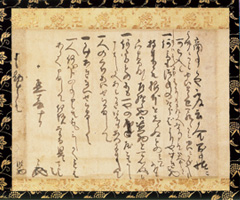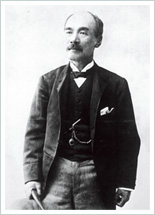The Founder's Precepts “Monjuin Shiigaki” is a letter sent by Masatomo Sumitomo (1585-1652), the founder of Sumitomo and a religious man, to his family members in his old age. It succinctly describes the guiding principles of his business operations.
At the beginning, it urges the reader, “Not only in matters of business but in all situations, make efforts with deepest gratitude in every aspect.”
The precepts also include such teachings as, “When goods are offered to you below the normal market price, under no circumstances should you ever purchase such goods, for their origins are unknown and they are probably stolen property,” “Never give shelter to a stranger, no matter who it might be; also, never take a stranger's goods into your custody, no matter how innocent they might appear” (these acts were prohibited by the government), and “No matter what someone might say to you, never lose your temper or speak harsh words; politely explain your position until an understanding can be reached.” These teachings have been handed down and form the basis of Sumitomo's business philosophy. They are still seen in today's principles, such as “no pursuing easy gains” (i.e., only making a profit on a fairly priced transaction that can be explained with confidence), “compliance” and “integrity and sound management.”











